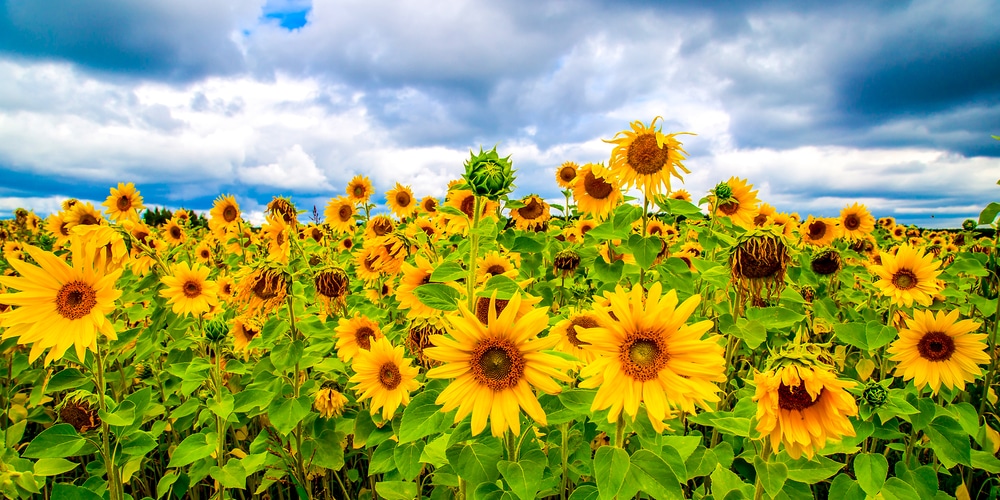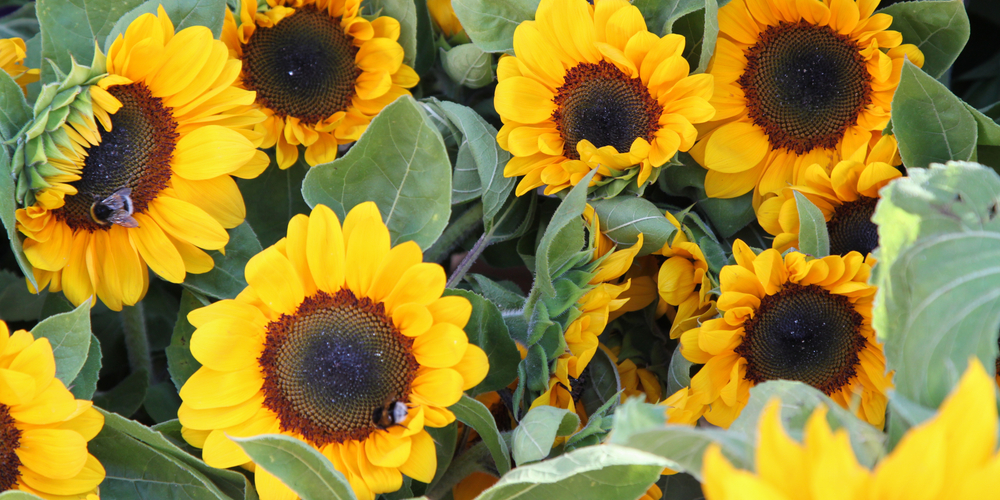Sunflowers are well known for their unique large and daisy-like composition which comes in a common bright yellow with brown centers. The reason why these flowers have become so popular is thanks to their unique behavior which focuses on “following” the sun.
This happens due to the fact that sunflowers are heliotropic, meaning that they will turn their flowers to follow the sun from east to west and once night arrives, they return to their original position (which is facing the east).
Naturally, they are an excellent gardening project to develop your skills as a gardener and to increase the looks of your garden by growing these magnificent flowers.
In Oregon, you will not have too many problems while planting sunflowers, but these heat-tolerant plants should be planted at a specific time to avoid issues.
That is why the next article focuses on discussing when to plant sunflowers in Oregon as well as explaining Oregon’s climate zone and last frost times.
When to Plant Sunflowers in Oregon:
1. Oregon’s Climate Zone and Last Frost Time:
Before planting your sunflowers, it would be wise to discover certain valuable information such as climate zones and the last frost time of your state, in this case, Oregon.
The western region of this state features a temperate oceanic climate with wet winters with tons of rain and snow, on the other hand, the summers are relatively cool.
However, when it comes o the eastern region, the weather is much drier, and less rain is experienced with hotter summers and colder winters.
In the USDA scale, Oregon features a climate zone range between 4a to 9b, which shows how different weather and temperatures the western and eastern regions offer.
When it comes to the last frost times, it is important to understand that while it is impossible to determine an exact date, approximations are made to help gardeners prepare themselves for the end of the cold temperatures.
Understanding the last frost time in Oregon will help you determine the best time to plant your sunflowers as all the desired conditions will be met on these dates. In the case of Oregon, the last frost time is usually between March 28 – April 3rd.
Keep in mind that while last frost time approximations work in certain countries, there could be the case when nature does its thing and the frost dates require less or more time to go away.
So avoid overstressing yourself with the constant tough of not being able to plant anything due to missing the first day of the last frost time, it does not work in that way, there will be more than time for your gardening projects.
2. When is the Best Time to Plant Sunflowers in Oregon:
The best time to plant sunflowers in Oregon is after the danger of frost dates has passed. It would be wise to wait at least 2 to 3 weeks with the objective of letting soils have warmed to at least 50 degrees Fahrenheit, which is what is recommended by sunflowers to grow outstandingly.
Keep in mind that while other flowers can be planted indoors before the last frost time, sunflowers do not have this quirk due to the fact that they do not like their roots to be disturbed, so always sow the seeds directly into the ground.
The reason why you should wait for 2 to 3 weeks after the last frost time is because sunflowers require direct sunlight with full sun for at least 6 to 8 hours per day.
Also, well-drained soil (which can not be obtained on cold dates) is required to guarantee good sunflowers.
Finally, the last reason why frost dates should be avoided at all costs is for the simple fact that low temperatures normally come with strong winds. Sunflowers do not like strong winds as they can gradually damage the plant.
3. Recommendations for Planting Sunflowers at the Best Time:
After you have the seeds prepared and you have checked that the last frost time was passed weeks ago, it is time to finally plant your seeds directly in your garden (remember that it was just explained how transplanting is bad for sunflowers).
However, before doing everything, you might want to check that your soil has a good space as sunflowers have long tap roots that need to stretch out.
Also, never forget the fact that sunflowers are recognized for being heavy feeders, meaning that the selected soil must be nutrient-rich with the usage of compost or organic matter to provide everything required to the plant and increase the rates of success in this gardening project.
After checking the soil’s condition, proceed to plant the sunflowers 1 to 1 – 1/2 inches deep and 6 inches apart from each other to make sure that there are no spacing issues in the future.
When to Plant Sunflowers in Oregon: Conclusion
Finally, when the sunflower is still small, water around the roots, and when it establishes, water deeply to encourage roots growth in the deepest part of the soil.
Do not overwater the plant as sunflowers just require water once a week with several gallons of water, be careful with this as you do not want to drown your plants.
You may also like: When to Prune Apple Trees in Oregon



